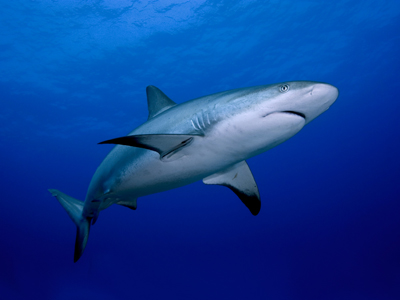
Ask the AI Tutor
Need help with Unit 1 - Energy Loss in Food Chains? Ask our AI Tutor!
AI Tutor - Lucy
Connecting with Tutor...
Please wait while we establish connection

A predator is usually found at the top of a pyramid of biomass.
Unit 1 - Energy Loss in Food Chains
In this GCSE Biology quiz, you will explore how and why energy is lost at each stage of food chains, from producers to top predators.
1 .
Which process in green plants traps sunlight energy?
Photosynthesis
Reproduction
Respiration
Excretion
This is done by the chlorophyll
2 .
What happens to the biomass at each successive stage in a food chain?
It is increased
It remains the same
It is reduced
It is all lost
Not all of the biomass eaten as food remains in the consumer's body. Some is lost through excretion and respiration
3 .
The producer is usually what type of organism?
A fungus
An animal
A plant
A bacterium
Chlorophyll in plant cells uses the energy from sunlight to convert carbon dioxide and water into glucose. This process, photosynthesis, also releases oxygen into the atmosphere
4 .
Which of the following statements about energy is true?
Energy is only ever created
Energy is only ever destroyed
Energy is only ever converted
Energy is only ever killed
This is the Conservation of Energy principle. All of the original energy of a food chain is still there but some of it has been spread out into the environment and is no longer available to the organisms of the food chain
5 .
How is most energy in food chains lost?
Energy in food chains is mainly lost due to death and decay
Energy in food chains is mainly lost due to respiration and excretion
Energy in food chains is mainly lost due to reproduction and breathing
Energy in food chains is mainly lost due to reflection and transmission
The energy and biomass lost from a food chain by death and decay is recycled by the decomposers
6 .
Which of the following statements about algae in a food chain is true?
Algae are always the primary consumer
Algae are always the secondary consumer
Algae are always the producer
Algae are always the predator
Algae are found almost everywhere on Earth and are the producer for many marine and freshwater food chains. It is said that 70% of the oxygen in the atmosphere is produced by algae
7 .
Energy in which form is lost to the surroundings in a food chain?
Light
Dark
Heat
Water
Ultimately, all energy conversions result in heat
8 .
Energy for all food chains comes from what source?
Sun
Moon
Producer
Consumer
All energy for living things comes from the Sun. Plants trap this energy and use it to make food which provides energy for animals
9 .
Which type of organism is usually found at the top of a pyramid of biomass?
Herbivore
Predator
Producer
Primary consumer
Predators are always found at the top of the energy pyramid and plants are always at the bottom
10 .
Which of the following is not a way in which energy is lost from animals in a food chain?
Movement such as flying or running
Inedible parts of the prey
Urine and faeces
Photosynthesis
Photosynthesis occurs only in plants
**Unlimited Quizzes Await You! 🚀**
Hey there, quiz champ! 🌟 You've already tackled today's free questions.
Ready for more?
Ready for more?
🔓 Unlock UNLIMITED Quizzes and challenge yourself every day. But that's
not all...
not all...
🔥 As a Subscriber you can join our thrilling "Daily Streak" against other
quizzers. Try to win a coveted spot on our Hall of Fame Page.
quizzers. Try to win a coveted spot on our Hall of Fame Page.
Don't miss out! Join us now and keep the fun rolling. 🎉
**Unlimited Quizzes Await You! 🚀**
Hey there, quiz champ! 🌟 You've already tackled today's free questions. Ready for more?
🔓 Unlock UNLIMITED Quizzes and challenge yourself every day. But that's not all...
🔥 As a Subscriber you can join our thrilling "Daily Streak" against other quizzers. Try to win a coveted spot on our Hall of Fame Page.
Don't miss out! Join us now and keep the fun rolling. 🎉






